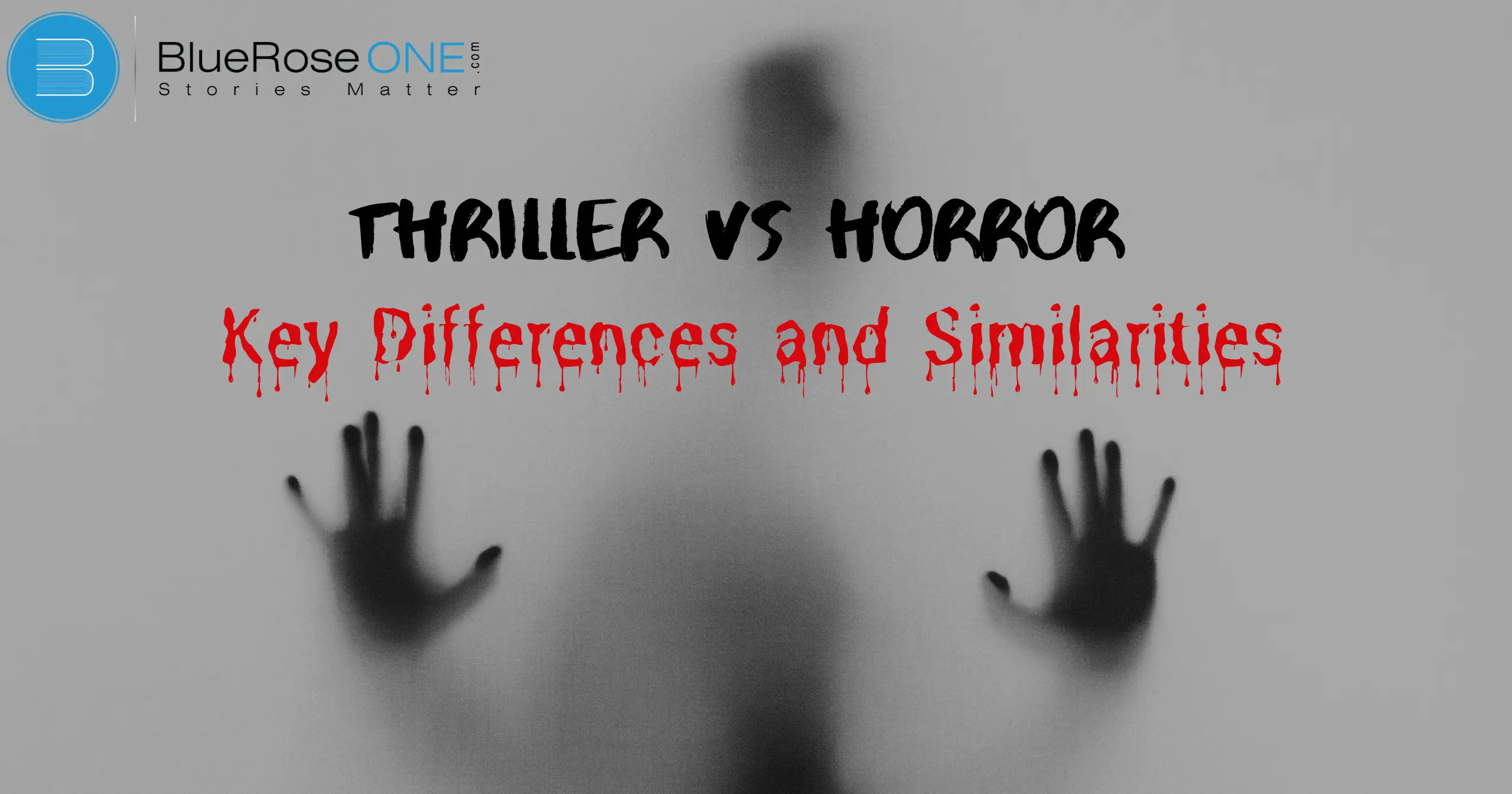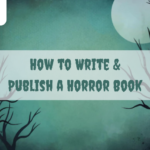The thriller and horror genres are frequently the first to come to mind when it comes to writing that keeps readers on the edge of their seats.
The objective of both genres is to arouse strong feelings and produce an engrossing experience. But they approach it differently.
In order to help you understand what makes each genre distinct and how they overlap, we’ll examine the main distinctions and similarities between the thriller and horror genres in this post.
You may also read: 5 Act Structure: Definition, Examples and More
What is a Thriller?
A thriller is a genre that aims to keep readers on the edge of their seats, frequently emphasizing tension and thrills. High stakes, complex narratives, and a quick pace are the hallmarks of thrillers. The major objective is to build suspense and keep viewers or readers wondering what will happen next.
You may also like: Positive Character Traits And Why They Are Crucial
Key Elements of a Thriller
Suspense: A thriller’s use of suspense is essential to keeping readers on the edge of their seats. It builds suspense and a sense of not knowing what will happen next, especially when there are complicated characters and significant stakes involved.
A thriller creates tension and keeps the reader interested by skilfully constructing sequences where danger or secrets are revealed. With its intense tension and emphasis on psychological strain rather than supernatural terror, thrillers set themselves apart from horror films.
High Stakes: “High stakes” are essential to producing tense and captivating storylines in thrillers. The major hazards or repercussions that the characters must deal with, which increase the plot’s suspense and urgency, are referred to as high stakes.
For example, a protagonist may encounter potentially fatal situations, moral conundrums, or important choices that affect several lives.
The thriller genre is engrossing and captivating because of the high stakes, which keep readers on edge and interested in the conclusion.
Complex Plots: Complex narratives are essential to thrillers in order to keep readers on the edge of their seats. These stories frequently include several turns, complex subplots, and multiple levels of deceit.
Unlike stories with simpler plots, thrillers need the protagonist to work through a maze of clues and red herrings in order to build tension through unexpected turns and tense situations.
The audience is deeply engaged by this complexity, which heightens the suspense and makes them want to solve the mystery even more.
Protagonist vs. Antagonist: The antagonist and protagonist are essential to moving the plot along in a thriller. The protagonist is usually the main character or hero who encounters difficult obstacles and makes an effort to overcome them.
Conversely, the antagonist acts as the main cause of opposition and conflict, frequently setting up suspenseful, high-stakes situations. A thriller’s protagonist-antagonist interaction is crucial since it generates the suspense and tension that characterize the genre.
You may also like: What is Plot Structure? Definition with Examples
Popular Subgenres
Psychological Thrillers: Focus on the psychological state of characters, often with a central mystery.
Political Thrillers: Involve political intrigue and conspiracies.
Legal Thrillers: Centered around legal battles and courtroom drama.
What is Horror?
Horror is a genre designed to evoke fear and dread in its audience. It often delves into the supernatural or macabre, exploring themes that disturb or unsettle. Horror stories aim to invoke a visceral reaction, tapping into primal fears and anxieties.
Fear: The terror genre is propelled by fear, which forces characters into dire circumstances that arouse strong feelings. There is a sense of tension and dread in horror films because terror is frequently rooted in the paranormal or the unknown.
This is not the same as a thriller, which is primarily concerned with the suspense and tension around criminal or psychological situations. Both genres employ dread to draw in viewers, but horror accentuates the effect with spooky settings and terrible characters.
Supernatural Elements: When otherworldly forces like ghosts, demons, or magical creatures are introduced, horror films frequently use supernatural themes to heighten the tension. The tension and anxiety these components produce heighten the unsettling atmosphere of the novel.
In contrast to thrillers, which center on psychological suspense and actual threats, supernatural aspects in horror films rely on the strange and the unknown to frighten viewers.
They increase the genre’s capacity to arouse fear and intrigue by obfuscating the distinction between reality and imagination.
Atmosphere: When supernatural aspects are introduced in horror films, such as ghosts, demons, or magical entities, the dread factor is frequently increased.
These components heighten the spooky mood of the story by generating tension and dread. The weird and the unknown are what frighten viewers when it comes to supernatural elements in horror films, as opposed to thrillers, which concentrate on psychological stress and actual threats.
They increase the suspense and intrigue that this genre arouses by obfuscating the distinction between truth and imagination.
Gore and Violence: Gore and violence are frequently employed in the horror genre to startle and unsettle the viewer. These components, which are meant to arouse fear and disgust, include vivid descriptions of bodily injury and gory imagery.
Despite the possibility of dramatic and terrifying moments, thrillers often refrain from graphic violence. Rather, thrillers emphasize deft planning and psychological tension.
Knowing how gore and violence set horror apart from thrillers makes it easier to appreciate the distinctive ways in which each genre captivates and generates suspense.
You may also read: How to Publish a Book? | Publish Your Book | BlueRoseOne
Popular Subgenres
Psychological Horror: Focuses on the mental and emotional state of characters.
Slasher Horror: Features a killer stalking and murdering victims.
Supernatural Horror: Involves ghosts, demons, or other supernatural beings.
Similarities Between Thriller and Horror
Emotional Intensity
The plot is largely driven by emotional intensity in both the thriller and horror genres. Readers are kept on edge by the suspense and urgency of a thriller as characters deal with twists and high-stakes situations.
Horror films evoke significant emotions as well, but they frequently center on terror and dread. Both genres seek to elicit a visceral response from viewers;
horror depends on supernatural or gruesome themes, while thrillers use psychological tension and unexpected plot developments to achieve this goal.
Atmospheric Tension
The creation of atmospheric tension is essential for a compelling story in both the thriller and horror genres. This tension is created in a thriller by tense situations, frequently emphasizing danger and high stakes.
To keep the audience on edge, the scene and tone have been meticulously created. Similar to this, horror relies on spooky settings and unnerving details to create an atmosphere of terror and dread.
Suspense and terror are two distinct genres, although they both use atmospheric tension to heighten the emotional impact on the viewer.
Plot Devices
Plot devices are essential for building suspense and keeping the reader interested in both thrillers and horror literature. Typical plot devices are cliffhangers, which give readers pause, and red herrings, which deceive the audience.
These components heighten suspense and the search for secrets in a thriller, but they intensify fear and dread in a horror film. Both genres, in spite of their disparate methods, employ these strategies to sustain high levels of suspense and emotional engagement, demonstrating their mutual reliance on narrative tactics to hold viewers’ attention.
You may also like: What is the Fourth Person Point of View? An Essential Guide
Key Differences Between Thriller and Horror
Purpose and Focus
It’s important to comprehend the unique goals and focuses of thriller and horror before delving into their main distinctions. A thriller should have dramatic tension and suspense to keep readers on the edge of their seats.
Its goal is to build suspense and excitement through unexpected turns and turns, frequently involving high-stakes scenarios, espionage, or criminal activity.
Horror, on the other hand, aims to arouse feelings of dread and terror by emphasizing macabre or supernatural aspects. Knowing these different goals makes it easier to tell the terrifying suspense of a thriller from the chilling terror of a horror film.
Types of Fear
In the realm of thrillers, psychological tension and suspense which emphasize building a feeling of expectation and worry about what might happen next are frequently the source of terror.
Fears of failure on a personal level, betrayal, and the unknown are common forms of terror in thrillers. These anxieties are meant to captivate the audience by undermining their feeling of safety and control and keeping them on the edge of their seats while they wonder how difficult, high-stakes scenarios will be resolved.
Character Roles
Characters in thrillers frequently take on roles that advance the suspense and tension. Usually a journalist, detective, or regular person thrown into extraordinary situations, the protagonist’s main goal is to solve a mystery or put an end to a crime.
Readers are gripped from start to finish by the tremendous, high-stakes trials they must overcome on their quest. In contrast to horror, where individuals frequently respond to paranormal threats,
thrillers place more of an emphasis on action and strategic thought, with protagonists fighting a war of cunning and tenacity.
You may also read: What is Upfront Fiction? Definition, Traits, and Examples
Thriller vs Horror: Examples in Literature and Film
Thriller Examples
- Books: The Da Vinci Code by Dan Brown, Gone Girl by Gillian Flynn
- Films:The Silence of the Lambs, Seven
Horror Examples
- Books: Dracula by Bram Stoker, The Shining by Stephen King
- Films:The Exorcist, Hereditary
You may also like: Foreword vs Preface: Know the Difference
Creating a Hybrid: Thriller Horror
Blending Elements from Both Genres
In thriller horror, combining aspects from both genres can result in an engaging hybrid. The stakes and level of anxiety can be raised by fusing the intense suspense of a thriller with the eerie ambiance of a horror film.
While horror emphasizes establishing an uncomfortable atmosphere, thrillers place more emphasis on suspense and the race against time.
By combining these characteristics, authors may create stories that are both incredibly tense and eerily frightening, drawing readers in with a mix of heart-pounding excitement and unsettling dread.
Successful Hybrid Works
- Books: The Girl with All the Gifts by M.R. Carey
- Films:The Sixth Sense, A Quiet Place
Conclusion
The goal of both the thriller and horror genres is to engross and captivate readers, although they do this through various topics and techniques.
Horror films explore terror and the paranormal, whereas thrillers focus on tension and complex narratives. You may better appreciate the subtleties of each genre and investigate the ways in which they can be blended to create genuinely remarkable stories by being aware of these differences and similarities.
















